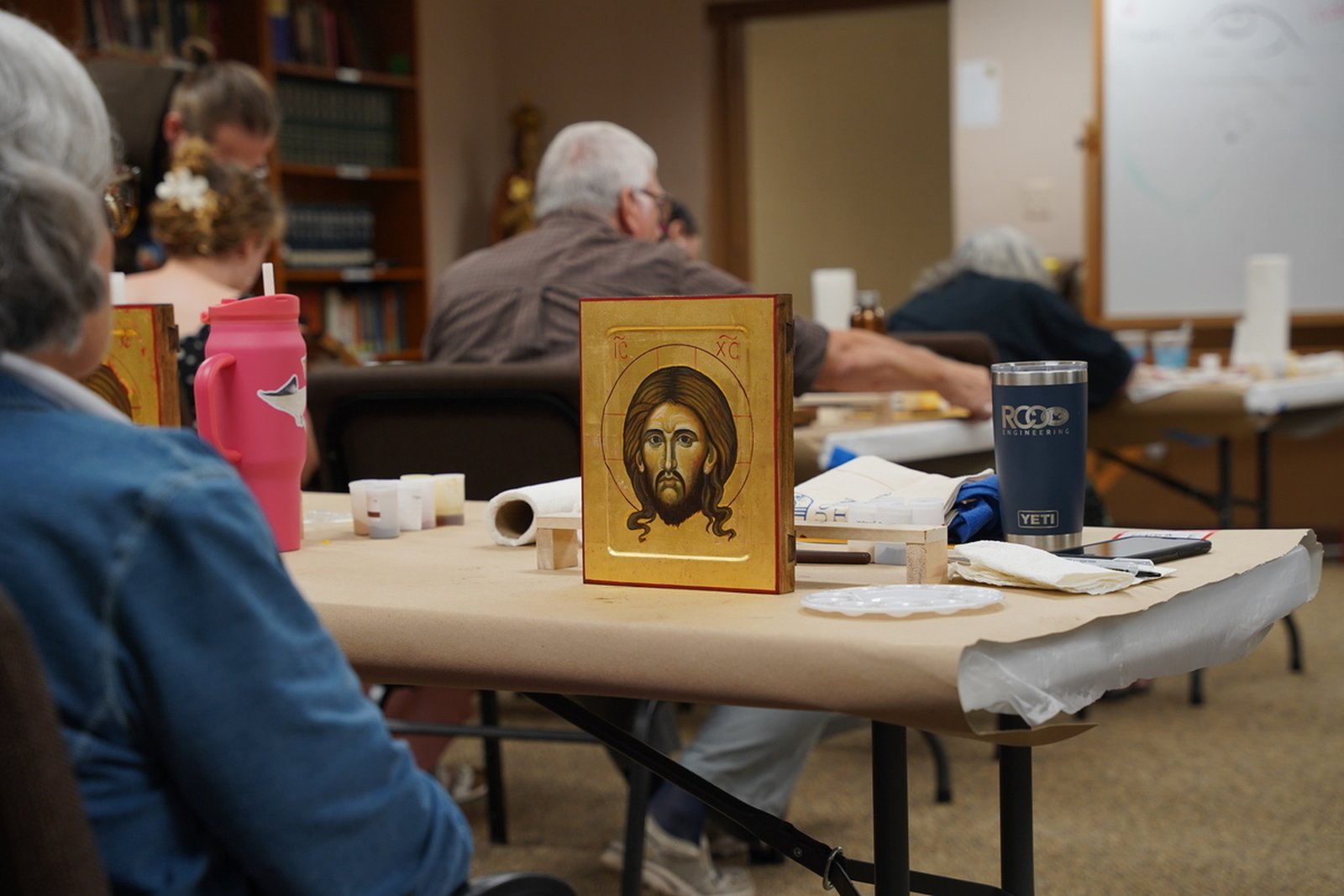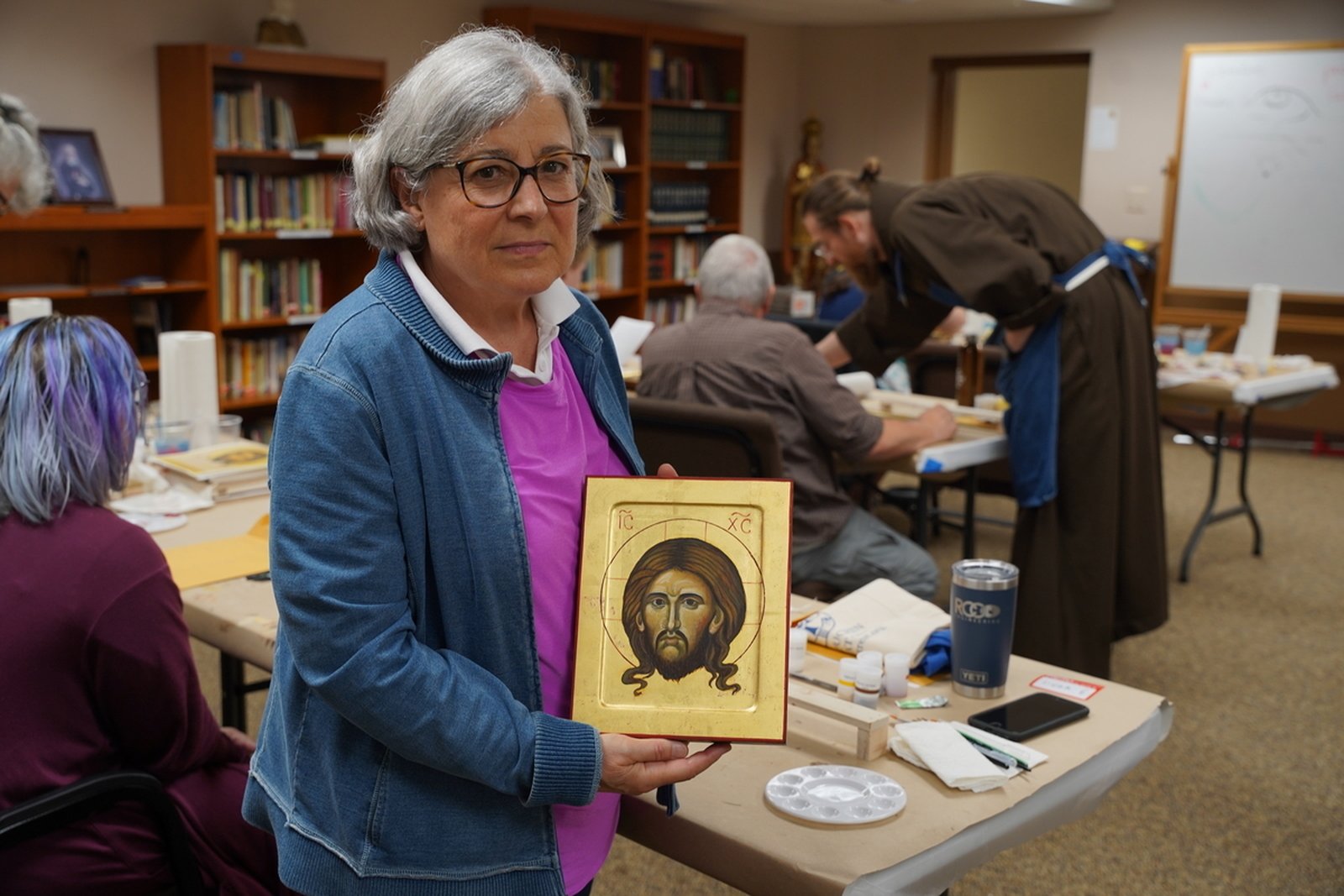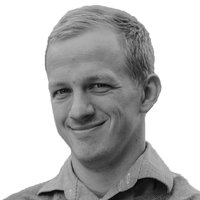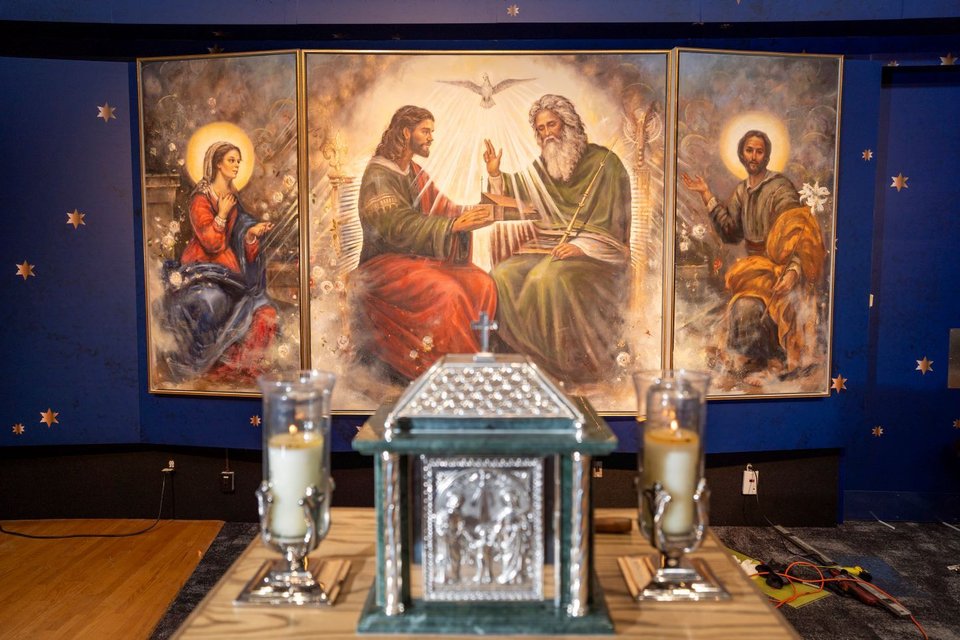Bro. Thomas Skowron, OFM Cap., trained in Germany and Ukraine, leads five-day retreat on holy artwork at Capuchin Retreat Center
WASHINGTON TOWNSHIP — Writing an icon is akin to growing a relationship with another person.
There is a process of laying down a foundation and building upon that foundation, negotiating through the bumps and creases one might experience when they are getting to know another person.
The end product is a unique image, something only the iconographer could make at that given space and time, and it is through that process that the artist comes to have a better understanding of the subject.
“An icon invites you into a relationship,” explained Bro. Thomas Skowron, OFM Cap., who led an iconography retreat July 8-12 at the Capuchin Retreat Center in Washington Township.
Bro. Skowron led a cohort of 20 retreatants in prayer and art, teaching the basics of what an icon is, how icons are written, and the theology behind the ancient liturgical art form.

“We try to paint the presence of God, which is a very ambitious task,” Bro. Skowron told Detroit Catholic on July 12, the final day of the retreat. “It’s not easy, but I find it very rewarding and a wonderful way of prayer. For the last five days, we’ve been staring at Jesus, constantly, which is like adoration. It’s a wonderful prayer.”
For five days, the retreat-goers learned about iconography, praying and discerning what it means to depict the image of Christ the Redeemer.
“Icons are sometimes called the window to God or to the divine space,” Bro. Skowron said. “I don’t like that image of a window, because I look at something through a window and know exactly what it is. I prefer to see an icon as a mirror. A mirror doesn’t give you a 100 percent image of what you are looking at; there is a little bit of distortion. That reminds me the reality that I see is just a reflection of the divine reality, which is much bigger.”
Bro. Skowron, chaplain of the Capuchin Soup Kitchen in Detroit, got into iconography when he was living in Germany and wanted to study iconography with another Capuchin who was living next door.
The two of them ventured to Hamburg to learn from a Benedictine monk and, after finishing their first icons in six days, they wanted to learn more, so they ventured to the Eikonon Schole in Uzhgorod, Ukraine, an iconography school of the Greek Catholic Eparchy of Mukachevo and the Capuchin Custody of Ukraine and Russia.
Bro. Skowron now leads retreats in the United States to teach others iconography — an art form he says doesn’t take too much time to get the hang of — teaching the basic forms and techniques to get first-timers interested in iconography.
Linda Endres, a member of St. Michael the Archangel Parish in Sterling Heights, has a degree in fine arts with a background in fibers, quilting and knitting, but wanted to learn more about iconography by attending the workshop on the Capuchins’ scenic retreat grounds.
Endres enjoyed learning about the theology behind the art form, particularly the explanation of how the artist will experience various highs and lows during the process, much like how a person experiences highs and lows in life.
“We had these morning sessions and afternoon sessions, and throughout the day I’d be in this mix with my mood going up and down, and we’d get to a point in the painting that was very critical,” Endres said. “Like when I was doing the eyes, I’d wake up that night, thinking about those eyes, because I had one eye that wasn’t right, so I’d feel nervous coming in and see what I could do. But then when I fixed it, I’d relax and get back into the joy of it.”
Beyond learning about techniques involved with iconography, Endres said the retreat delved into the spiritual aspect and what it meant for the artist to be in the presence of the subject of the icon, using their own hands to create an image of the Divine Savior.
“It touched me when Bro. Thomas talked about how we’ll be spending five days gazing on the Holy Face,” Endres said. “I found that when I was done with a particular step, standing the icon up and just sitting with that, being a visual person, it seemed like a beautiful way to be in communion with the Lord.”

Just as Bro. Skowron said icons are mirrors of holy people, they also serve as a mirror to the artist themselves. It’s why each icon is unique, imperfections and all, a look into the artist just as much as the subject.
“Every icon is different; that’s something I (teach) them,” Bro. Skowron said. “There is something in this icon that is specific to you. Maybe it’s darker, because there is darkness in your life. I don’t want to do therapy here and over-interpret, but sometimes, there can be a struggle when we paint because have our own turmoil. But as you work with the board, you learn patience, both in art and in life."
As the retreatants finished up their icons, which were blessed in a liturgy at the end of the retreat, Bro. Skowron said besides learning more about the techniques, he hopes participants were able to grow a deeper spirituality in praying before an icon.
“I hope they discover the beauty of icons, that there is more than just the visual side of it,” Bro. Skowron said. “They are beautiful pieces of art, but there is a whole reality about it. We try to depict the divine reality, and I hope they will be able to discover it. I want them to be able to find joy, and that seems to be working well. They all seem to have a lot of fun painting and discovering and just looking at Jesus and finding themselves in their icons.”
For Endres, the retreat meant having the opportunity to learn not just what it takes to write an icon on a technical level, but what it means to produce and absorb these sacred images on a spiritual level.
“I feel this week has made an impression on me that’s hard to put into words,” Endres said. “The experience of creating something — it mirrored life. Things don’t always go smoothly, but in the end to come away with something beautiful, that is a beautiful metaphor. And in the end, I’m left with the beautiful icon that’s mine, something I spent so much time with and now I’m glad it’s finished.”
Copy Permalink
Sacred art











